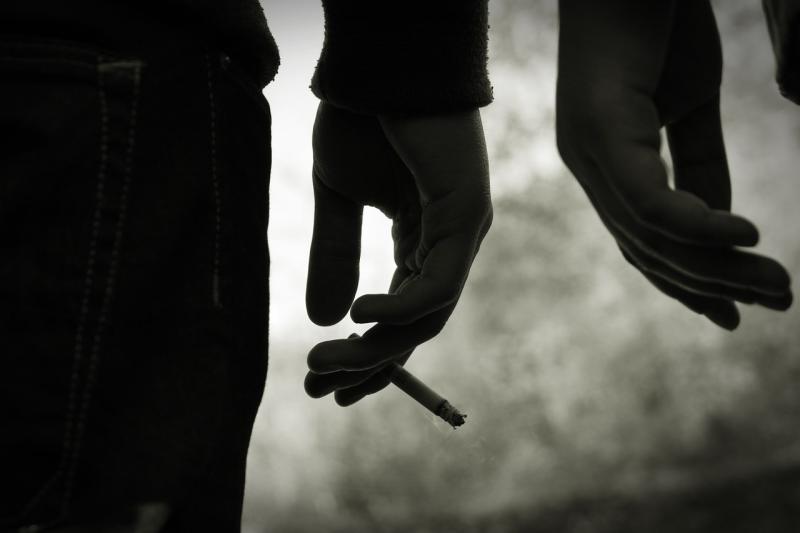
In June of 2018, San Francisco became the first city in the United States to enact a complete ban on all flavored tobacco products. Included in the ban were reduced harm alternatives like e-cigarettes, vapes, and smokeless tobacco. The ban was the result of a ballot referendum, Proposition E, that 68% of voters supported. Nearly three years later, startling new evidence is emerging that demonstrates San Francisco’s flavor ban has had serious consequences for public health and should serve as a clear and urgent warning to other states that are considering similar measures.
Dr. Abigail Friedman, a public health policy expert and researcher at Yale University, published a new study this week in the peer-reviewed Journal of the American Medical Association. Dr. Friedman’s study utilized data from the Youth Risk Behavior Survey, a biennial survey of students, to examine if changes in San Francisco’s smoking rates were associated with the flavored tobacco ban. She looked at data from previous surveys in San Francisco’s schools, as well as other large school districts like Broward County, Florida; Los Angeles, California; New York City, New York; and Philadelphia, Pennsylvania.
Dr. Friedman’s study compared differences-to-differences, meaning she looked at how different San Francisco’s data was from other comparable districts to determine the impact of the 2018 flavor ban. Her findings are remarkable and should serve as a warning to the many other states and localities seeking to implement similar measures. The main findings of Dr. Friedman’s study can be found below, while the full study can be read here.
Key Findings:
- “San Francisco’s ban on flavored tobacco product sales was associated with increased smoking among minor high school students relative to other school districts”.
- The city’s flavored tobacco ban “was associated with more than doubled odds of recent smoking among underage high school students”, compared to similar school districts without a flavor ban.
- From 2012 to 2016, San Francisco’s youth cigarette smoking rates were below the average rates in comparable districts. In 2017, there was not a statistically significant difference between cigarette smoking rates in San Francisco and comparable districts.
- In 2019, youth cigarette smoking rates in San Francisco had risen to 6.2%. In comparable districts, the rate had continued its decade-long downward trend and had fallen to 2.8%, an all-time low.
Scientific evidence shows that e-cigarettes are 95% less harmful than traditional cigarettes and are at least twice as effective at helping smokers quit than nicotine replacement therapies like patches or gum. Youth vaping has significantly decreased since it was declared an “epidemic” in 2018, although there is still work to be done. However, any proposal that would decrease e-cigarette use at the expense of increased cigarette smoking among teenagers or adults would cause much more harm than youth vaping ever could.
The prohibition of flavored vaping products lacks justifying evidence, while there are numerous evidence-based reasons to allow flavors in vapes. Primarily, adult cigarette smokers like flavored vapes and find them more helpful for smoking cessation. A recent study found that smokers who use flavored vapes to quit are 43% more likely to succeed than someone using an unflavored or tobacco-flavored vape. Further, data shows that teenagers are not drawn to vapes because of flavors, with only 5% of underage vapers saying that it was flavors that made them start vaping. Additionally, academic studies have found that teenage non-smokers “willingness to try plain versus flavored varieties did not differ”.
Dr. Friedman’s study is a vital contribution to the scientific field of tobacco control and harm reduction and shows a proposal that is popular across the country has unintended, grave consequences for public health. So far this year, at least thirteen states have considered prohibitions on flavored tobacco products and e-cigarettes that, if enacted, would likely drive-up youth smoking rates across the country. The work of Dr. Friedman should be widely publicized in order to best educate voters and lawmakers on the impacts that these policies have. The evidence is clear; flavor bans do more harm than good and must not be implemented in the interests of public health.

Pictured above is a graph from “A Difference-In-Differences Analysis of Youth Smoking and a Ban on Sales of Flavored Tobacco in San Francisco, California” by Dr. Abigail S. Friedman, depicting Youth Risk Behavior survey results from 2011-2019 in San Francisco and similar school districts. The original graph can be accessed here.

